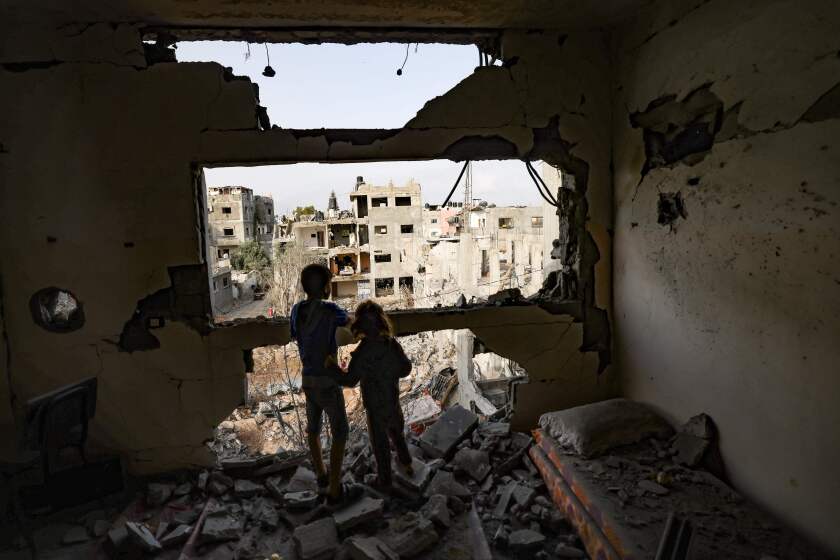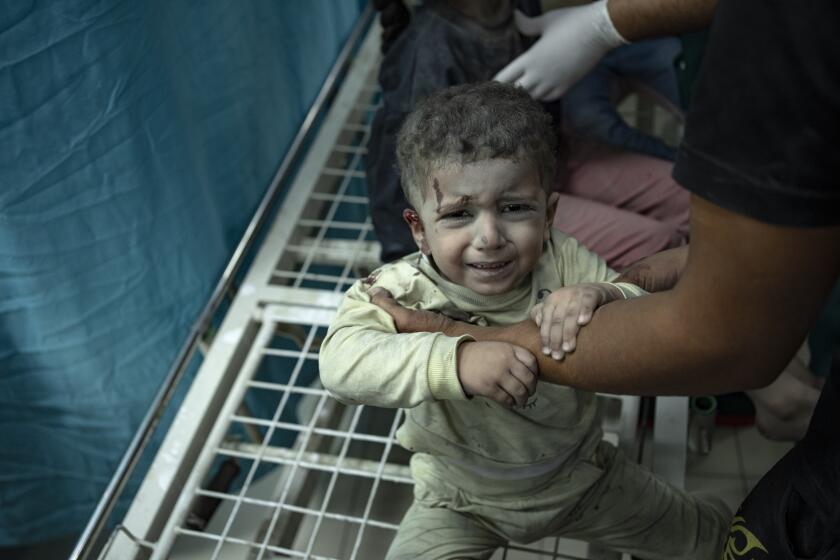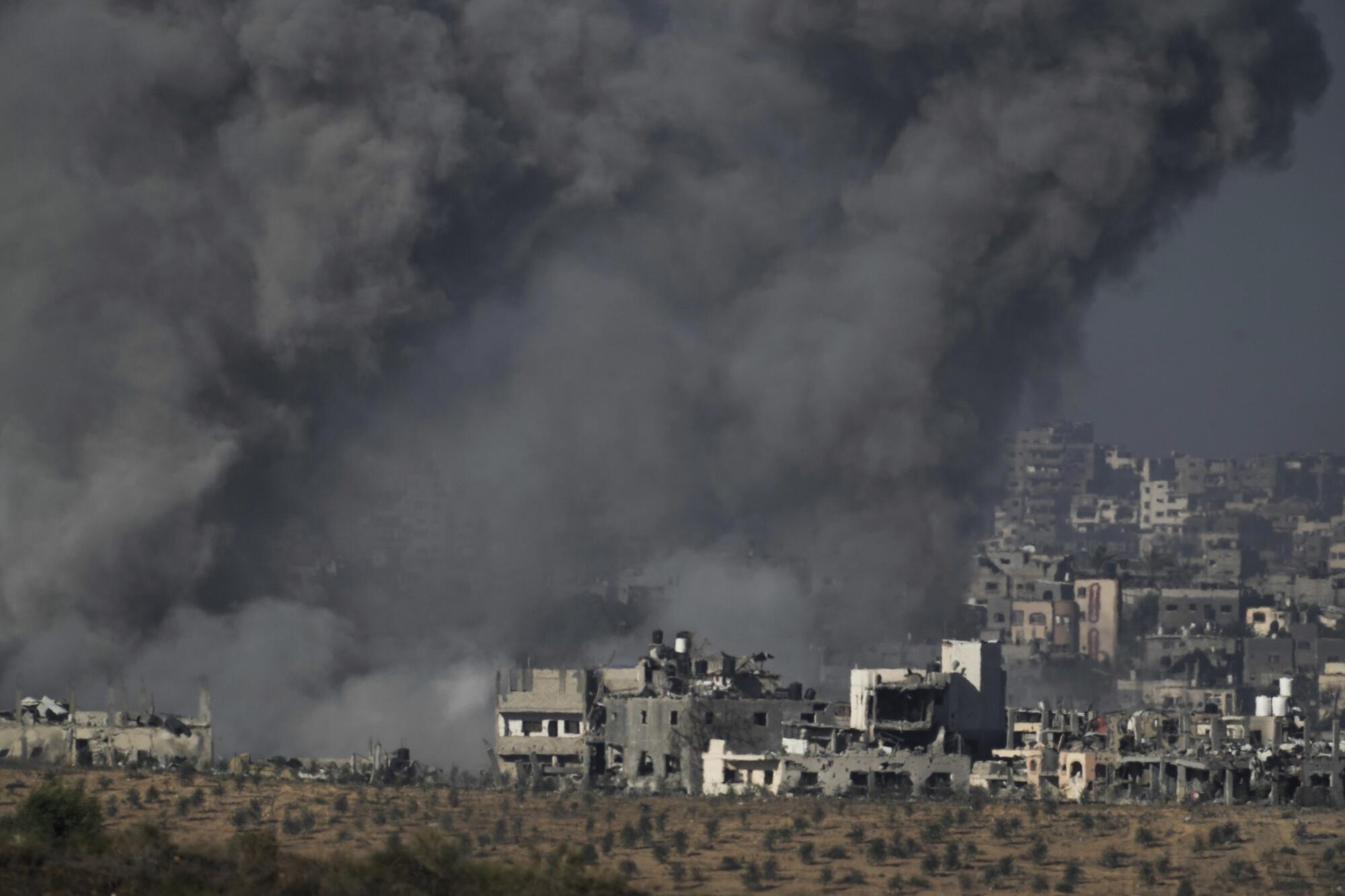
DEIR AL BALAH, Gaza Strip — Israeli troops battled Palestinian militants in an urban refugee camp and outside the gates of a nearby hospital Tuesday as the army expanded operations across northern Gaza, where residents have been without electricity, water or access to humanitarian aid for weeks.
The front line of the war, now in its seventh week, has shifted to the Jabaliya camp, a dense warren of concrete buildings near Gaza City that houses refugees from the 1948 war surrounding Israel’s creation and the refugees’ descendants. Israel has been bombarding the area for weeks, and the military said Hamas fighters have regrouped there and in other eastern districts after being pushed out of much of Gaza City.
Fighting has also intensified outside the Indonesian Hospital on the outskirts of Jabaliya, where a strike killed 12 people Monday. Health officials said Tuesday that hundreds of patients and displaced people are trapped inside with dwindling supplies after some 200 were evacuated the day before.
Senior Hamas officials, meanwhile, said they were close to reaching a deal through international mediators to release some of the estimated 240 people taken hostage by the group in its Oct. 7 attack on Israel, which triggered the war. The talks have repeatedly stalled, and past predictions of a breakthrough proved premature.
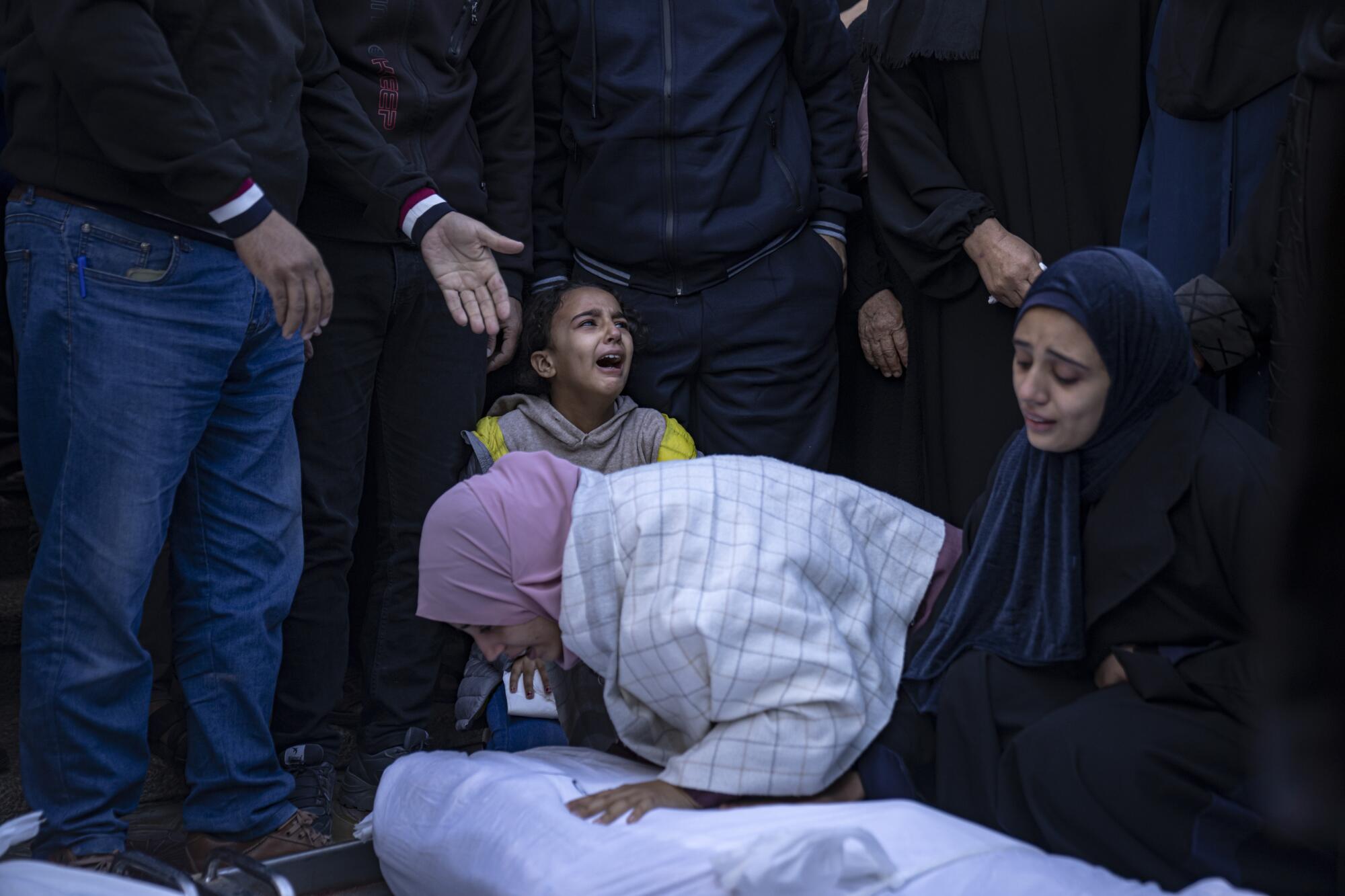
In southern Lebanon, an Israeli strike killed two journalists with Al-Mayadeen TV, according to the Pan-Arab network and Lebanese officials. There was no immediate comment from the Israeli military, which has repeatedly traded fire with the Hezbollah militant group since the outbreak of the war.
The war has exacted a heavy toll on Palestinian civilians, particularly those who remain in the north after Israel repeatedly called on people to flee south.
Abdullah Alathamna’s family suffered when Israel shelled his family’s Gaza home in 2006. Now a father, he fears for his daughters. ‘I want to protect them,’ he says. ‘But I cannot.’
It’s unclear how many people stayed behind, but the United Nations agency for Palestinian refugees estimates that some 160,000 people are still in its shelters there even though it is no longer able to provide services. Some 1.7 million Palestinians, about three-fourths of Gaza’s population, have fled their homes, many packing into U.N.-run schools and other facilities across southern Gaza.
As shelters have overflowed, people have been forced to sleep on the streets outside, even as winter rains have pelted the coastal enclave in recent days. There are shortages of food, water and fuel for generators across all of Gaza, which has had no central electricity for more than a month.
Israel continues to strike what it says are militant targets across Gaza, including in the southern evacuation zone, often killing women and children, and officials have said the military may soon expand its operations in the south.
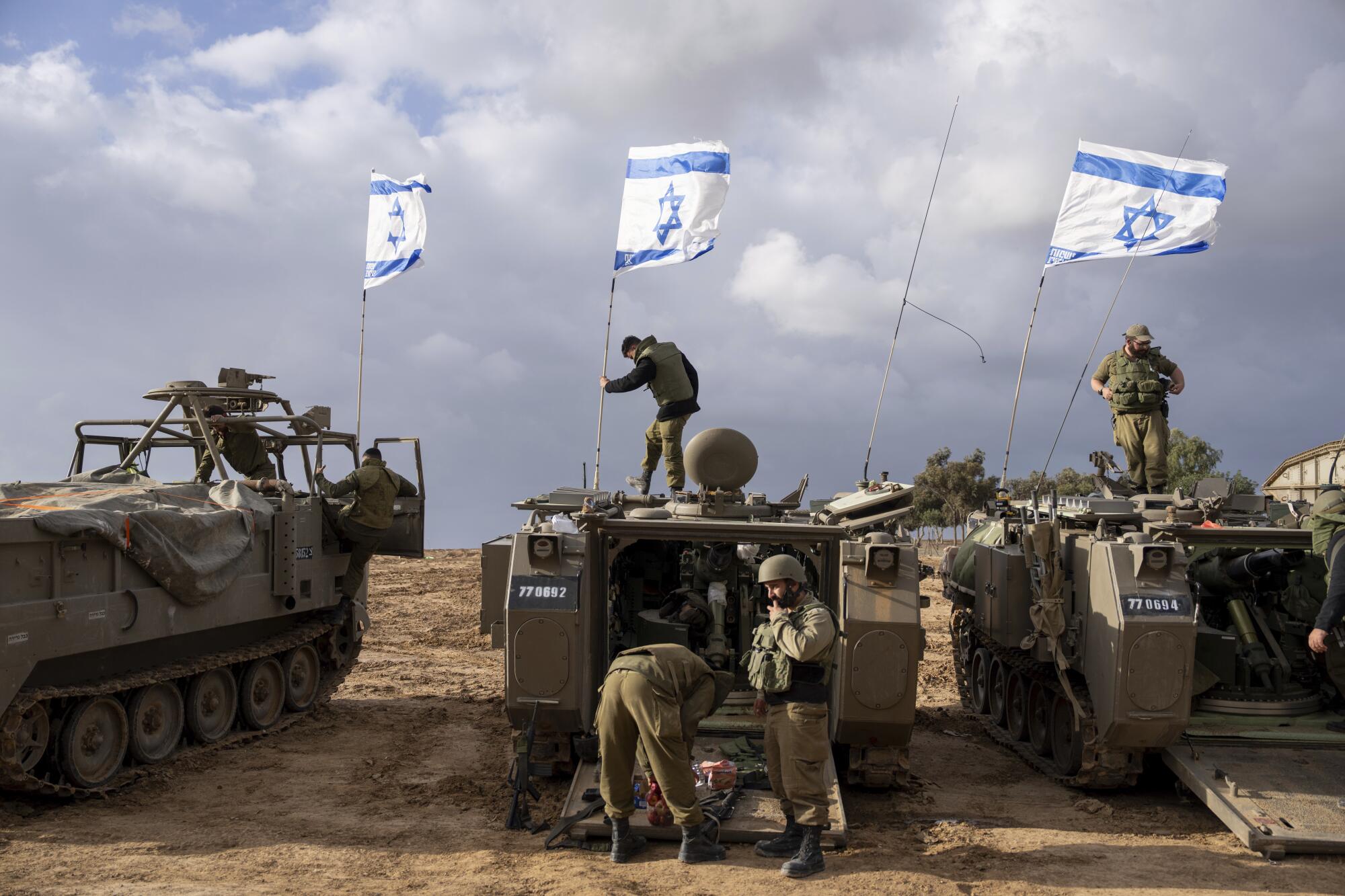
The Israeli military said its forces are “preparing the battlefield” in the area of Jabaliya. It said they struck three tunnel shafts where fighters were hiding and destroyed rocket launchers. Video released by the military shows Israeli soldiers patrolling on foot as gunfire echoes around them.
Residents said there had been heavy fighting as Israeli forces tried to advance under the cover of airstrikes. “The [Israeli] occupation is trying to besiege the camp,” said Hamza Abu Mansour, a university student. “They are facing stiff resistance.”
It was not possible to independently confirm details of the fighting.
As a rabbi, I teach the value of every human life. That’s why I and other rabbis in the Jewish peace movement are demanding an immediate cease-fire in Gaza.
In the face of airstrikes and advancing Israeli troops, tens of thousands of Palestinians in the north had sheltered in hospitals, but those have steadily been emptied out as the fighting has reached their gates, and most are no longer operational.
The hospital situation in Gaza is “catastrophic,” Michael Ryan, a senior World Health Organization official, said Monday. In the north, “it is the worst you can imagine.”
Munir Boursh, a senior Gaza Health Ministry official who said he was inside the hospital, told Al Jazeera television by phone that Israeli forces had besieged it, forcing health workers to bury 50 bodies in the courtyard. There was no immediate comment from the Israeli military.
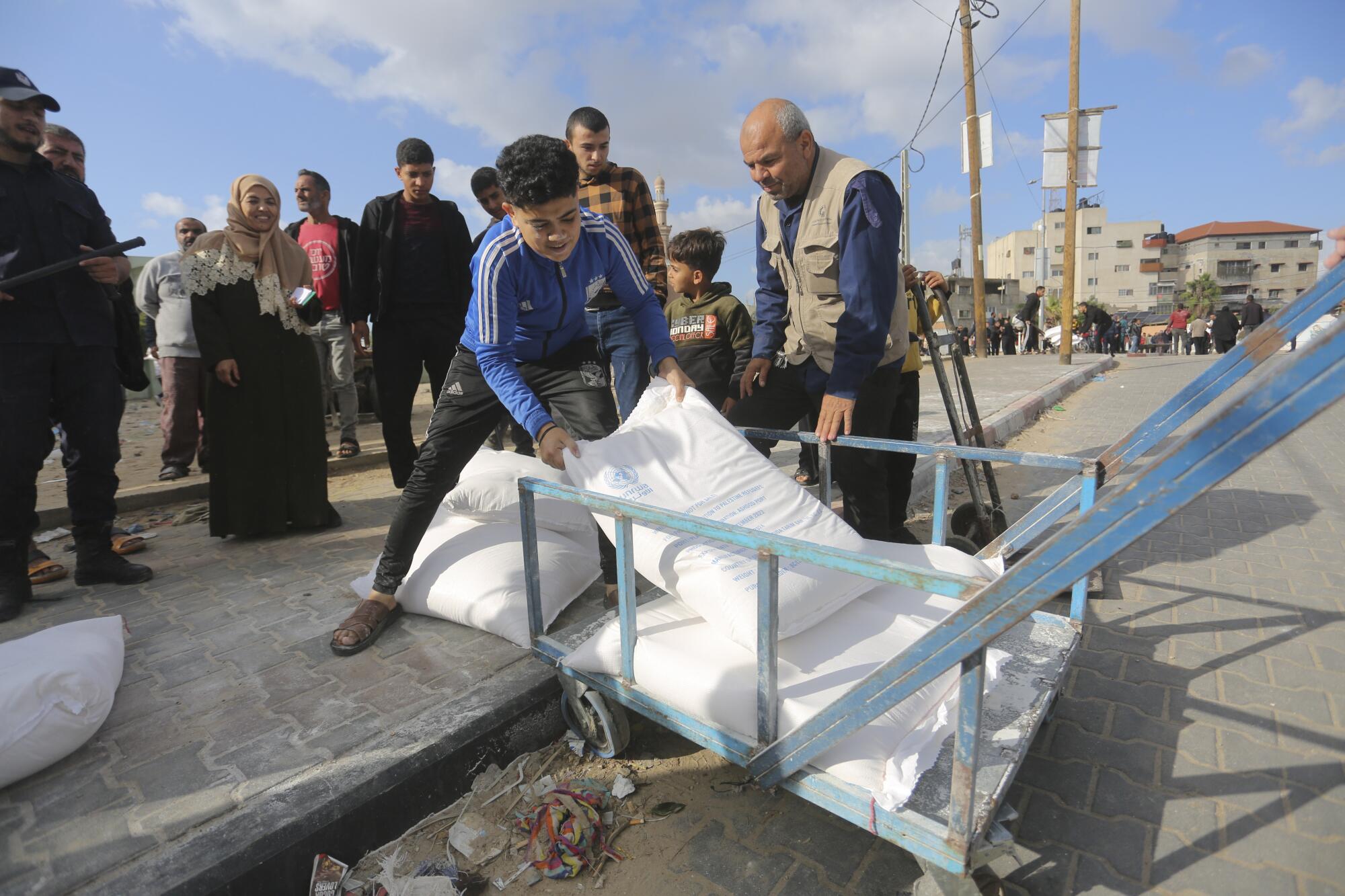
Palestinian officials said an Israeli shell struck the hospital Monday, killing 12 people. Israel denied shelling the hospital, but said its troops returned fire on militants who targeted them from inside.
Up to 600 wounded people and some 2,000 displaced Palestinians remain stranded at the hospital, according to the Health Ministry.
A similar standoff has played out in recent days at Shifa Hospital, Gaza’s largest, where more than 250 patients and medical workers are stranded after the evacuation of 31 premature babies.
Israel has provided some evidence in recent days of a militant presence at Shifa, where its troops have been operating since last week. But it has yet to substantiate its claims that Hamas had a major command center beneath the facility, allegations denied by Hamas and hospital staff.
Breaking News
Get breaking news, investigations, analysis and more signature journalism from the Los Angeles Times in your inbox.
You may occasionally receive promotional content from the Los Angeles Times.
More than 12,700 Palestinians have been killed in Gaza, according to the Palestinian Health Ministry in the West Bank. Officials there say an additional 4,000 are missing. Their counts do not differentiate between civilians and combatants. Israel says it has killed thousands of militants.
The Palestinian Health Ministry bases its count on information gathered by its counterpart in Hamas-ruled Gaza, which has been unable to fully update casualty figures for more than 10 days because of the breakdown in services and communications in the north.
About 1,200 people have been killed on the Israeli side, mainly civilians during the Oct. 7 attack. The military says 68 Israeli soldiers have been killed in Gaza ground operations.
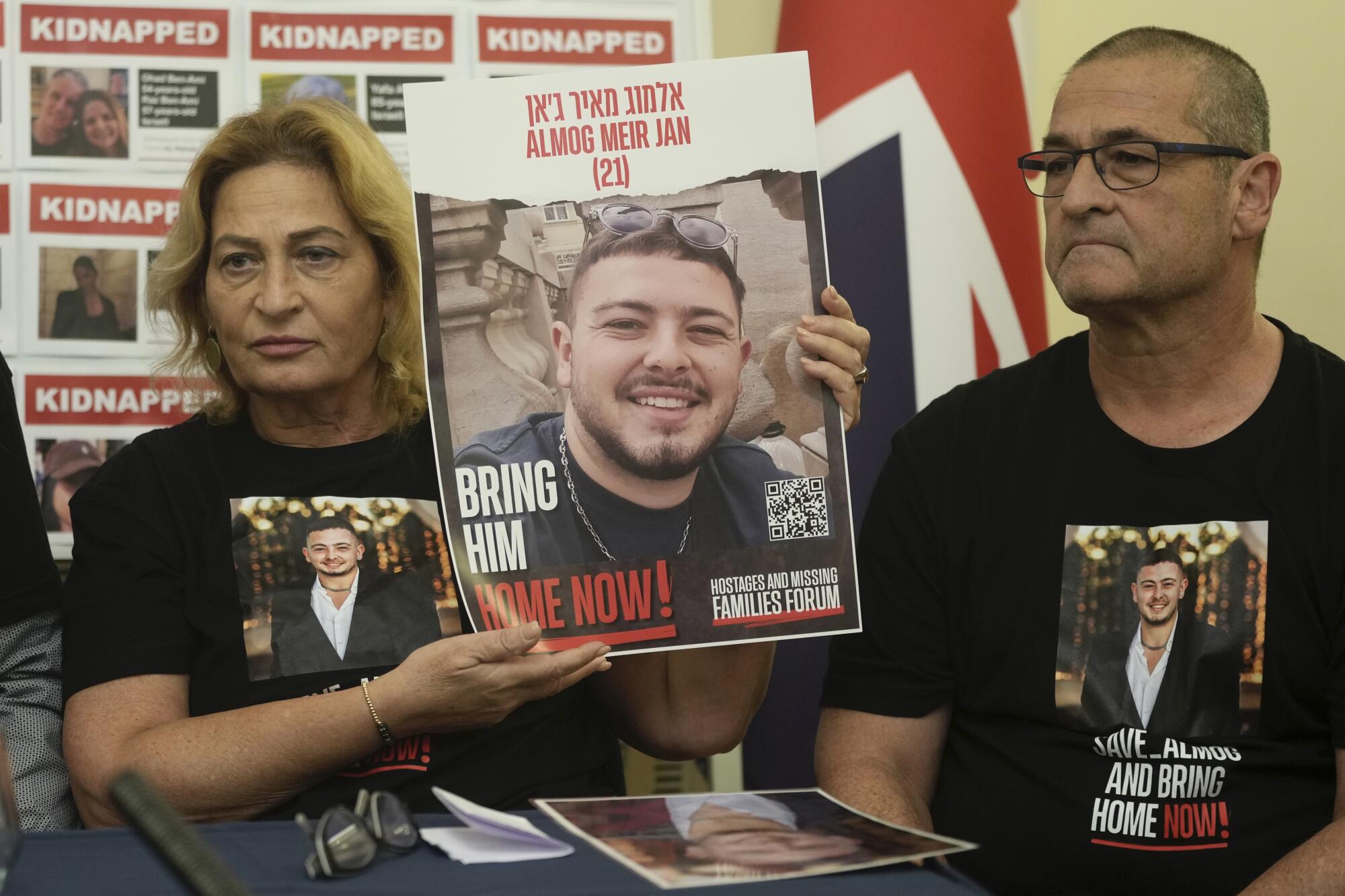
Military video from other areas in the north in recent days has shown widespread destruction, with nearly every building appearing to be damaged or destroyed.
Israel, the United States and Qatar, which mediates with Hamas, have been negotiating for weeks over a hostage release that would be paired with a temporary cease-fire and the entry of more humanitarian aid.
Izzat Rishq, a senior Hamas official, said Tuesday that an agreement could be reached “in the coming hours,” in which Hamas would release captives and Israel would release Palestinian prisoners. Hamas’ leader in exile, Ismail Haniyeh, also said they were close to a deal.
Israel’s war Cabinet met with representatives of the hostages’ families Monday evening. Prime Minister Benjamin Netanyahu told families that the government considers the release of hostages and the defeat of Hamas to be equally important, according to a family member who attended.
Udi Goren, whose cousin Tal Chaimi is in captivity in Gaza, said that was “incredibly disappointing” for the families, as Israel has said it could take months to dismantle the militant group.
More to Read
Sign up for Essential California
The most important California stories and recommendations in your inbox every morning.
You may occasionally receive promotional content from the Los Angeles Times.
